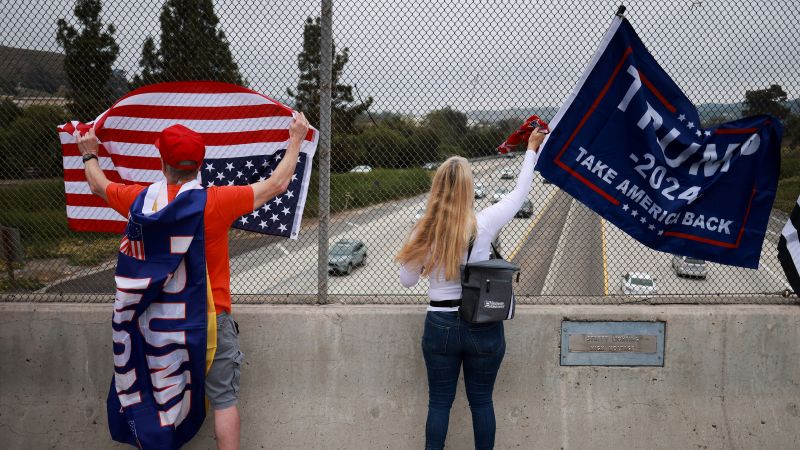The act of hanging the United States flag upside down, traditionally a signal of distress, has now been adopted by supporters of Donald Trump to protest his conviction in his hush money trial. Prominent Trump supporters such as Rep. Marjorie Taylor Greene and former national security adviser Michael Flynn have posted pictures of upside-down flags on social media. Social media accounts supporting Trump have been flooded with images of inverted flags displayed on porches and lawns across the country. Even the conservative think tank, The Heritage Foundation, posted a picture of an upside-down flag above its headquarters in Washington, DC.
In California, American flags placed outside a library to commemorate Memorial Day were found to be turned upside down overnight, causing a stir in the local community. The city manager of Monrovia expressed surprise and disappointment at the incident, as the flags were meant to honor veterans. The practice of inverting the US flag has gained attention recently after it was revealed that Supreme Court Justice Samuel Alito had an upside-down flag outside his home in response to a neighborhood dispute. According to US code, the flag should only be displayed upside down as a signal of dire distress in instances of extreme danger to life or property.
Despite the guidelines, the trend of displaying upside-down flags seems to be growing. Country music star Jason Aldean shared an image of an inverted flag on his Instagram page, expressing concern about the treatment of a former president by the justice system. The post garnered almost half a million likes, indicating a growing sentiment of discontent among some Americans. The significance of the upside-down flag as a symbol of protest may continue to be a topic of debate and controversy in the coming days.
The act of hanging the US flag upside down has taken on a new meaning as a form of protest against perceived injustices, specifically in response to Donald Trump’s conviction in his hush money trial. Supporters of Trump, including prominent figures like Rep. Marjorie Taylor Greene and Michael Flynn, have embraced this symbolic gesture as a way to express their dissatisfaction with the legal proceedings. Social media has played a significant role in amplifying this form of protest, with images of inverted flags being shared widely across various platforms.
Instances of American flags being displayed upside down in public places, such as outside a library in California, have sparked conversations about the appropriateness of using this symbol to convey political messages. The city manager of Monrovia expressed disappointment at the disrespectful act, as the flags were intended to honor veterans. The controversy surrounding the upside-down flag has intensified in recent weeks, particularly after Justice Alito’s involvement in the matter brought renewed scrutiny to the practice.
Despite the guidelines outlined in US code regarding the proper display of the flag, the trend of hanging it upside down as a form of protest appears to be gaining momentum. Public figures like Jason Aldean have joined in by sharing images of inverted flags on social media, reflecting a growing sense of unease and dissatisfaction with the current state of affairs. The use of the upside-down flag as a symbol of discontent may continue to provoke debate and discussion, highlighting the complexities of expressing political dissent through symbolic gestures like flag inversion.


